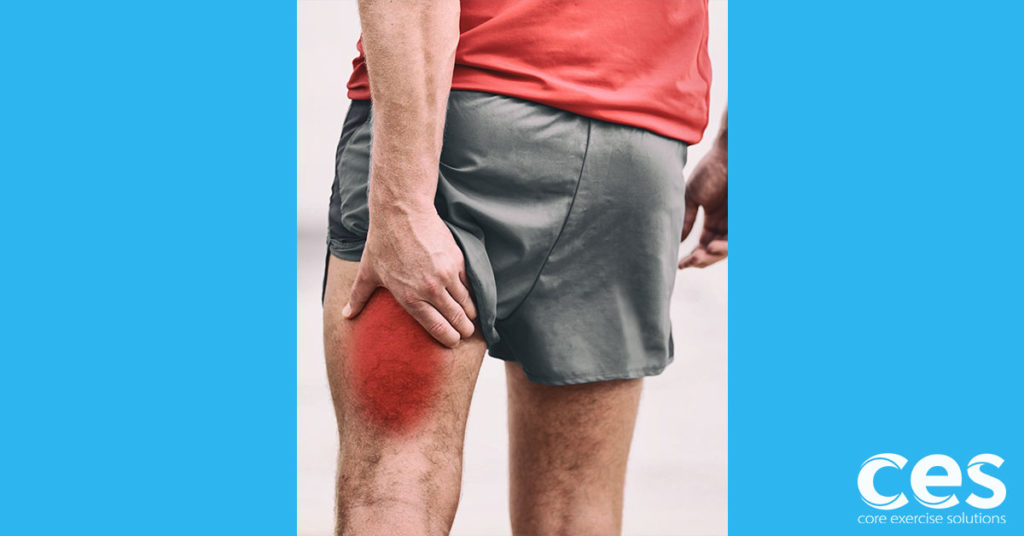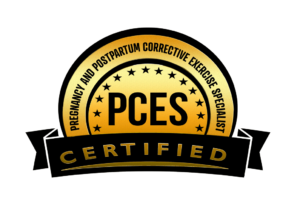I was thinking back to a patient from one of my internships during PT school in 2004. She had pain on her ischial tuberosity (sits bone), probably from an old hamstring strain, but she didn’t remember the cause (vaguely remembers an ache after a tennis match). It got worse with prolonged sitting, and car trips were pure agony. I think I helped her some, but I didn’t fix her. Looking back now, armed with loads more experience and education, I think I could have crushed it if I saw her today. Hindsight. LOL!
Back then I released the area on and around the ischial tuberosity and worked the entire length of the hamstrings looking for trigger points. A little hands-on work can be really helpful for getting an area to let go and heal! Then I had her do the standard bridges, planks, and clams… but treatment was mostly centered around manual work that made her feel better short term, but it didn’t hold.
Chronic hamstring strains need manual work, but they often need a multifaceted approach to fully resolve. You may need to release your pelvic floor or tightness in the deep hip rotators as well, both can change the dynamics of the hamstrings. (My personal opinion.) When there is tightness in the deep hip external rotator and/or pelvic floor it pulls the hip into a more tucked position when you sit, which feels like you are sitting on a layer of flesh over the ischial tuberosity instead of sitting on the bony ischial tuberosity itself. It’s a common description I hear from anyone complaining of an ache or tenderness deep in the hip or suffering from a chronic hamstring strain. They feel uneven when they sit.
Some people need more hamstring loading to get better. For that group, we’re going to be tackling eccentric training and lengthening the hamstring muscle.1 I like to start easy by having the patient lie face down, with their knee bent and resist me bringing their foot down to the table, then I have them stand and lean over a treatment table resisting me bringing their hip into flexion (leg toward the floor from extension). You could also add the knee component to that, but at some point, I just need more hands. I’ll have patients hook a band around something at home so they can resist by themselves. Having a rehab partner is even better. Eccentric hamstring work is not easy to set up. I find things like bridges are just not hard enough in the eccentric phase to really have much effect on their hamstring. That said, negative bridges are pretty awesome! But they are a bit advanced, as are Nordic hamstring curls. They end up being two of my favorite go-to exercises for higher level patients.
You can focus on the lowering part and then bend the hips to come back up to get only eccentric loading.
These are also very advanced so you can start with two legs, and then when you’re ready, lower with one then lift with two. I particularly like these for ischial tuberosity strain on the hamstring sites because they get a lot of hip flexion. It feels awesome! "Pull or ache in a good way."
What if you get manual work on the area and work the eccentrics, but the pain continues to persist?
Let’s dive a little deeper into influencers of the hamstring. I often find with patients where the above first line of treatment doesn’t work, we need to consider the hamstring might actually be overworking instead of underworking.
The hamstrings pull the pelvis into a posterior pelvic tilt (bum tucked position). What else pulls the pelvis into a posterior tilt? The deep transverse abdominis and internal obliques are the first to activate to tilt the pelvis under, followed by the rectus abdominis and external obliques. 2 So, maybe abdominal weakness is contributing to the issue? If the hamstring is the primary muscle helping to balance the pelvis in a posterior position (we’ll get to the glutes in a second), then a little more abdominal activation could help decrease some of the stress on the hamstring and let it heal.
Check to see if one side of the abdominal wall is weaker than the other. I often see a cross body pattern, if one side is weaker (look for rib flare), then the opposite hamstring might be feeling the tightness. This may or may not hold true, but it’s something to look at for sure. (If you’re a PRI fan, this fits with the BC - Left AIC pattern.)
Glutes! The key to all happiness and wonder in the body. Just kidding, kind of! Great glutes help a lot of things feel and function better, from the low back to the pelvic floor. When we’re looking to see if the glutes could be influencing this continued hamstring issue, I like to check if the hamstring fires before the glute. Both the hamstrings and glutes work together to extend the hip but the glutes should fire first. At least in theory, they are the prime movers and the hamstrings are the assistors.
(Got to love the facial expressions in freeze frame, thanks youtube! Ha!)
Then, I like to check for continued glute firing. Can the glute sustain the contraction during the lift or as you lift your leg up, does your glute decide to take a bit of a breather and let the hamstring pull the whole load? This could be an issue for the hamstring.
Then, we need to look at the feet. If the arch is collapsing and weak, the deep external rotators and glutes can try and help by clenching. How far down this rabbit hole do we want to go? The point is that pain at the ischial tuberosity may need a little exploration down some fun paths to finally accomplish complete recovery.
It hurts my ego to look back on patients I didn’t help. I wish I would have known more back then, but I hope if you’re a practitioner and you’re in my boat, you feel the same way. If we never look back and see mistakes, it means we are not growing and learning. I can’t wait to look back after another decade of practice and see what I have improved upon. The human body is incredibly wonderful and I can't wait to learn more!
Thanks for joining me on this fun hamstring journey, and as a side note, if you work some of those eccentric exercises now it could actually prevent a hamstring strain in the future.3 So, have fun exercising.
- Tyler TF, Schmitt BM. Rehabilitation After Hamstring-Strain Injury Emphasizing Eccentric Strengthening at Long Muscle Lengths: Results of Long-Term Follow-Up. J Sport Rehabil. 2017 Apr;26(2):131-140.
- TAKAKI S, KANEOKA K, OKUBO Y, et al. Analysis of muscle activity during active pelvic tilting in sagittal plane. Physical Therapy Research. 2016;19(1):50-57.
- Shield AJ, Bourne MN.Hamstring Injury Prevention Practices in Elite Sport: Evidence for Eccentric Strength vs. Lumbo-Pelvic Training. Sports Med. 2018 Mar;48(3):513-524.


